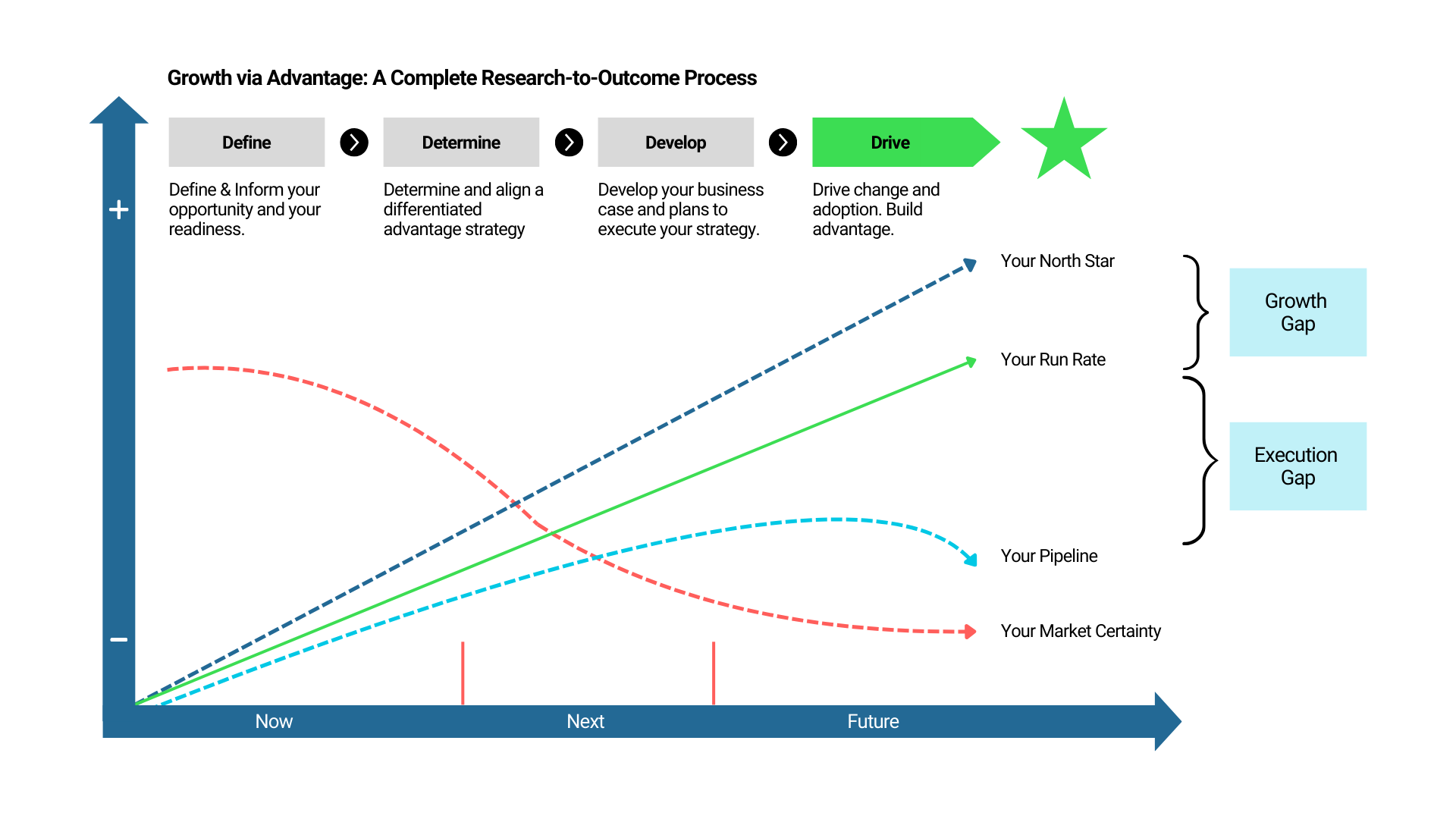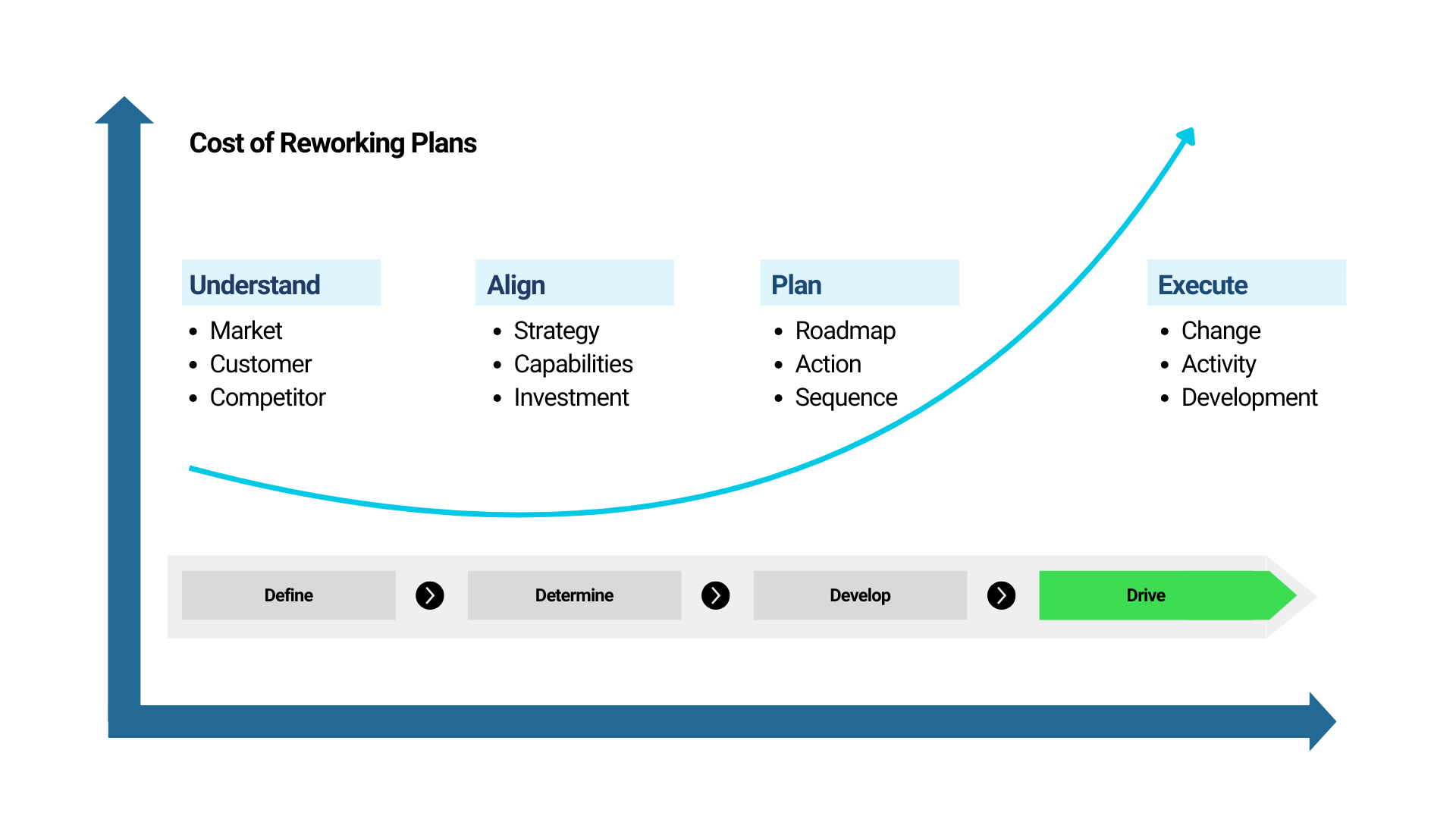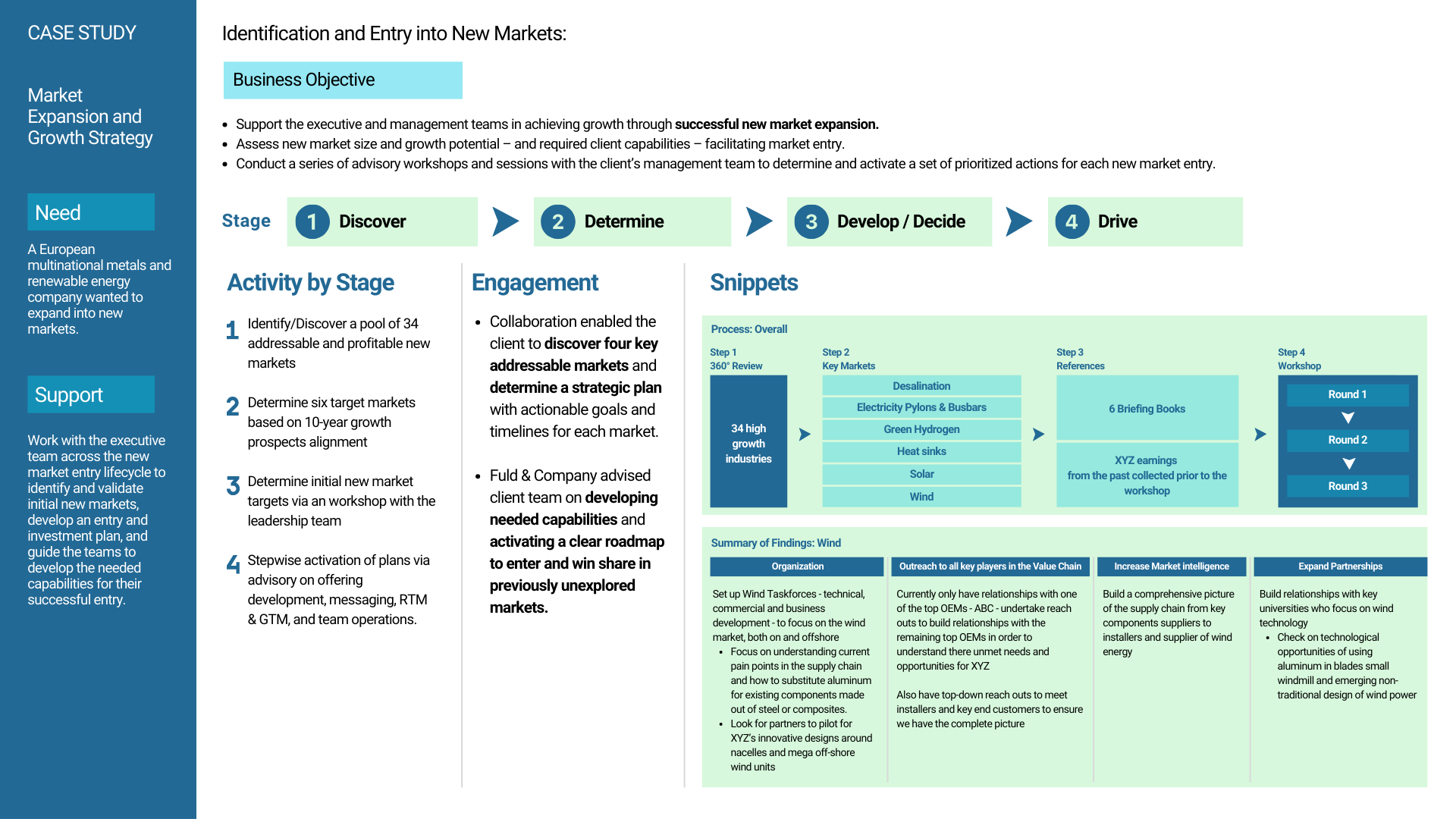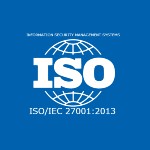The Executive’s Action Economy: Accelerating decision-making in uncertain times
Posted by | Stuart Williams
Summary
The Executive Decision Process as an action economy offers a powerful framework for navigating uncertainty and driving business success. This approach enables executives to improve their decision-making, prepare their teams for execution, and position their organizations for sustained growth and competitive advantage, crucial in today’s fast-paced, competitive market. The quality of business decisions is directly correlated to outcomes, with companies that excel in making and executing key decisions seeing top-tier financial results.
Situation normal – action vs risk
Executives constantly face a critical challenge: how to take the best actions when there is a shortage of time and resources to achieve their business goals. This challenge is compounded as new products emerge, customer preferences shift, and competitors make unexpected moves. Insights that were valuable last quarter may already be out of date, leaving executives with a shrinking window to make informed decisions and take timely action. As the revenue pipeline weakens, the need for informed, decisive action grows— but so does the associated risk.
Business decisions are everywhere across a firm – driving business cases for limited funding, talent, and capacity for action – and these decisions are connected up and down the org chart.
- Executive teams must decide and align around the overall strategy and business targets. 75% of venture-backed start-ups fail1.
- Product leaders must decide how to invest in developing, pricing, and winning with market aligned offerings. 40% of new products miss the mark or fail by the end of Year 22.
- Marketing leaders must decide how to go-to-market, how to get the greatest brand awareness and how to stimulate demand. Just over 50% of global marketers feel certain they can measure full-funnel ROI3.
- Sales leaders must align their function for maximum efficiency and effectiveness in to how to exceed revenue goals. Between 40% and 60% of deals end in no decision2.
- Technology leaders must allocate limited resources into supporting and protecting the business. Up to 70% of Digital transformations fail3.
Each function has a pyramid of decisions that not only drive their activity but impacts and – hopefully – accelerates the outcomes of decisions made by their peers.
It’s critical to assess not only the immediate risks but also the long-term strategic impacts of today’s decisions.
The key to success lies in balancing the need for swift action against potential risks. Acting quickly is often essential, but the cost of inaction or misaligned decisions can be severe. Missteps may stem from outdated intelligence, a lack of insights into competitors, or misunderstanding future trends. Executives must navigate this delicate balance, reducing the risk of maintaining the status quo, or making poorly validated decisions, while remaining agile enough to respond to evolving market conditions.
Why is making better decisions important? Research shows a 95%1 correlation between companies excelling in decision-making and execution and those achieving financial success. This emphasizes the need to not only act quickly but with confidence in decision validation.
 A way out: The Executive Decision Process
A way out: The Executive Decision Process
There is a way out of this dilemma: an action economy that drives and validates the executive decision-making process. Our Executive Decision Process consists of four esential steps, each designed to reduce uncertainty, craft the best decisions, focus investment on outcomes, enable strategy, and scaffold execution. It is a a repeatable, rapid, reasonable, and transparent process.
- Discover: Uncover opportunities, threats, and behaviors in the market.
- Determine: Select strategies and align stakeholders based on current and required capabilities and resources.
- Develop: Create actionable plans for investment and capability expansion to achieve the chosen strategy.
- Drive: Execute the plan through activation, transformation, capability expansion, and a focus on creating market-differentiating value.
The Executive Decision Support Process applies to, and improves the outcomes, of leadership decisions at all levels. It applies to essential market targeting, key messaging, and sales battle decisions as well as future innovation and corporate strategy development.
Where is the Executive Decision Process applicable?
Reworking plans and transformations in the execution stage is costly and confusing. Each step in the decision process is an action where the executive improves the quality of the decisions and action, thus reducing risk. Spending these actions takes time and resources, but avoids the larger cost of a poor or misaligned plan, and poor or misaligned execution. The larger the change in the business environment or operation, the greater the risk and potential cost of reworking the plan when it is broadly enacted.
Advanced Tip: Depending on the capital and operating planning process of the client business, enacting the Decision Process as a continuous process with multiple, incremental iterations can accelerate and also reduce the scale – and risk – of change!
Activating the Executive Decision process
While many organizations have internal teams supporting various aspects of this process, it’s critical to understand that globally, managers and executives make billions of decisions each year. Better decisions help close execution gaps, win market share, and grow profits, but decision quality can vary widely. And partnering with experienced consultants can significantly accelerate the action economy across all four steps. Fuld & Company provides the expertise to help executives navigate this process efficiently and effectively.
By scaffolding client efforts, our team can help organizations win the race between uncertainty and the erosion of the revenue pipeline. This support enables executives to act faster and with greater confidence, even in the face of rapidly changing market conditions.
Better decisions drive competitive advantage AND reduce isk
The value of the Executive Decision Process approach lies in its focus on action: to resolve uncertainty, focus on a strategy, minimize risk, and drive execution. By compressing the time between discovery and execution, organizations can capitalize on opportunities before they disappear and address threats before they become insurmountable.
In fact, improving decision-making processes—whether in terms of speed, quality, or implementation—has a proven correlation to financial performance. Organizations that master all three see a multiplier effect, far beyond those who excel in just one area.
A key element of this process is validation—ensuring that decisions align with current market realities and competitive landscapes. By continuously monitoring shifts in competitor strategies, market conditions, and customer preferences, real-time insights help validate executive strategies. These insights act as a critical feedback loop, ensuring that decisions are based on the most up-to-date information.
Executives can rapidly assess whether chosen strategies are still relevant or need adjustment. This dynamic validation process reduces the risk of pursuing poorly aligned plans, allowing organizations to pivot quickly in response to emerging threats or opportunities. In an environment where timely, well-informed decisions are key to survival, this approach enables leadership to act with greater confidence and precision, aligning execution with the most current intelligence.
The development of actionable plans ensures that strategies do not remain theoretical but are translated into concrete steps that can be implemented into day-to-day operations. This bridges the often-problematic gap between strategic thinking and operational execution.
Finally, the focus on driving plans into reality through roadmaps and guidance ensures that organizations don’t merely adapt to current market conditions but position themselves to create market-winning value. This forward-looking approach helps companies not just survive but thrive in competitive landscapes.
Get in touch with us today to discover how the Executive Decision Process can accelerate your organization’s decision-making, reduce risk, and position you for long-term success in a competitive market.
References
- Startup Failure Statistics: Why Do They Fail? (2024), LLC
- Stop Losing Sales to Customer Indecision, HBR
- How marketers can grow confidence in measuring ROI across the entire range of marketing objectives, Nielsen
Tags: Competitive Advantage, Competitive Strategy, Risk Management





















